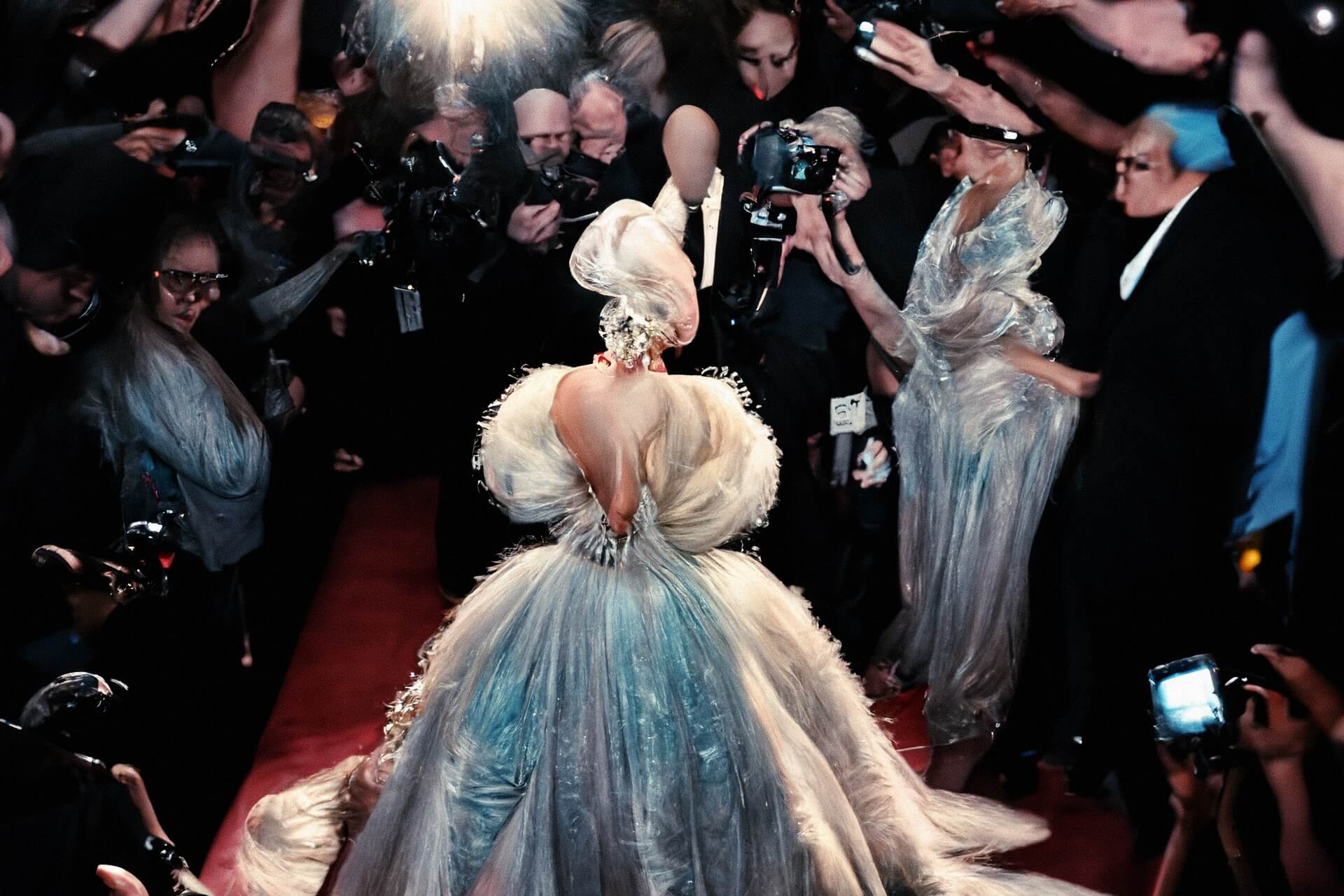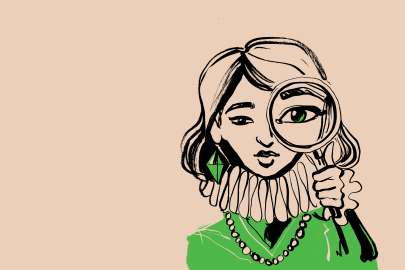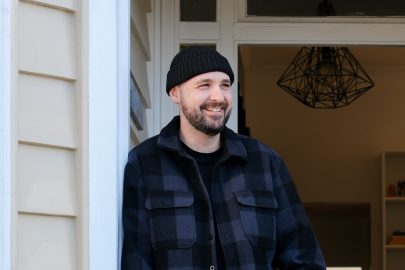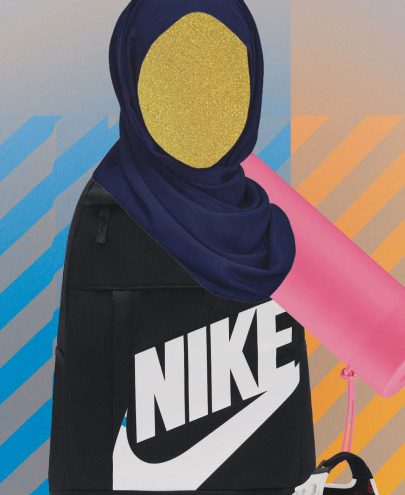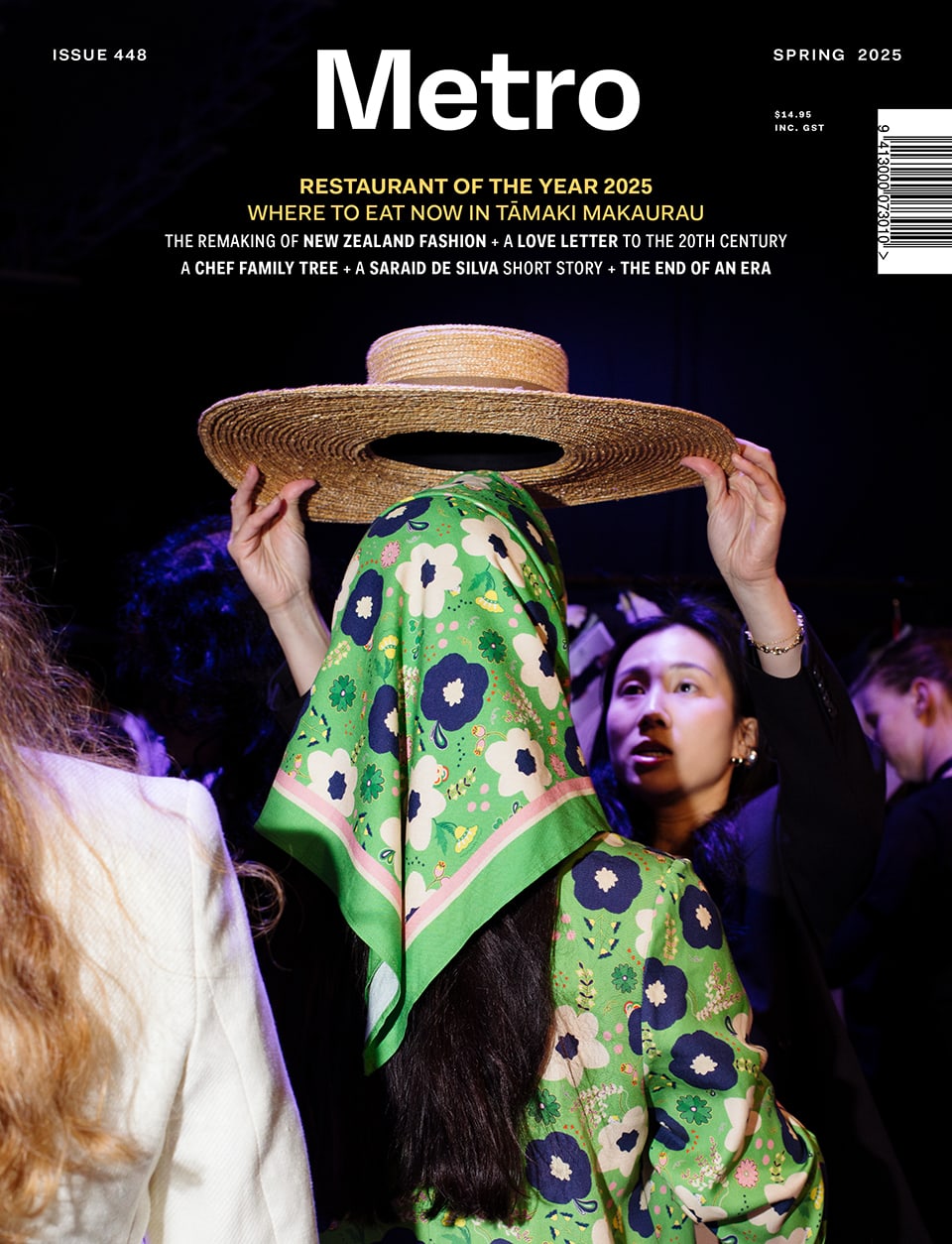May 21, 2023 Society
In the mid-1990s, in homes up and down the country, before, during and after dinner, families would gather to watch TV. Just before 7pm, there’d be an argument over whether there was something important enough on Holmes to justify missing Shortland Street (which, if so, might be taped on VCR and watched later). On any given night, nearly half the country could be watching either of these two shows. There was basically nothing else. (TV3 showed reruns of The Simpsons or Home Improvement — it wouldn’t dare run original episodes against TVNZ’s 7pm dominance.)
Around this time, my cousin moved to Auckland and, as it was reported throughout the family, one weekend she’d been to a cafe and seen a whole table of Shortland Street stars. It was almost unbelievable — too good to be true. Shortland Street actors were, in those days, as famous as anyone could be in this country. They were like an All Black and a movie star rolled into one. There was a dedicated magazine, trading cards and a novelty single. Paul Holmes, too. His off-camera movements were as newsworthy to many New Zealanders as his infamous on-air battles. Holmes didn’t have his own magazine but was on the cover of the weeklies so often that he may as well have (and this was before his even more controversial decade, including racist remarks, in the 2000s). He didn’t just have a novelty single, he had an entire album.
At the time, Sido Kitchin worked as a publicist for Shortland Street and then as the TVNZ publicity manager. From today’s standpoint, it doesn’t seem like a difficult job. Busy, sure — everyone wanted a piece of Paul Holmes and Judy Bailey and Richard Long; Angela Dotchin and Martin Henderson and Temuera Morrison — but it wasn’t hard to get publicity for them and their shows. “In those days, magazines were lining up to get stars on the cover,” says Kitchin, who, after two decades working as a publicist and then a magazine editor across Bauer’s women’s titles, including Woman’s Day and Woman’s Weekly, is now New Zealand general manager for Medium Rare Content Agency. “So either I was the publicist pushing to get my stars on covers — though I didn’t have to push that hard; magazines were competing for those cover stars — and then on the other side, people were coming at me.”
As a magazine editor for 15 years, Kitchin had to find celebrities to put on the cover of three magazines — two weeklies and one monthly — 116 cover stars a year, all of whom had to be recognisable enough to sell the issue they adorned. “There were so many stars to choose from and you could build stars really quickly and easily,” she says. “Someone could be on Shortland Street for six months and they’d be a cover star. But by the time I finished in magazines — my career in women’s magazines ended in 2020 with the global pandemic — it had gotten harder and harder to find cover stars.”
I had wanted to talk to Kitchin to get an expert opinion on a theory I’d been wondering about for some time, especially when trying to think of people we could put on the cover of Metro: in an increasingly fragmented world, we have more celebrities than we’ve ever had before, and therefore, on average, they are less famous than they used to be.
Or in the expanded version: when we had fewer options for entertainment, New Zealanders had more shared popular culture and therefore a smaller number of widely known, culturally significant, generally resonant people. When those people are known through media coverage, with their personality, image and life itself consumed as entertainment, we call those people ‘celebrities’. Now, not only are we not limited to a small handful of television channels for our evening’s entertainment, fewer and fewer of us are watching the same things at the same time. When a contemporary family are sitting around in the evening, it is not unusual for each of them to be on their own device, watching TikTok, YouTube, Netflix or Neon. Or not watching anything at all. One or more of them might just be doomscrolling through Instagram, jealousy-eaves-dropping on the life of someone they barely remember from high school, or busy curating and promoting their own life for those who may be eavesdropping on them. Each of those family members will have their own cultural frame of reference and, within that frame of reference, their own celebrities. Sure, there will be crossover and overlap, but there’s a higher chance than ever that each of those people will consider someone legitimately famous whose existence is completely unknown to the people they’re sitting next to. It’s as if, as a society, there is a finite supply of fame, and that fame is now spread thinly between more people than ever. Celebrity itself has been diluted.*
“The star power of celebrities was so much bigger then,” Kitchin says, recalling the stories she’d prep, boasting about TVNZ’s ratings for the next day’s newspapers. “Because there was no Netflix or Apple or Instagram, so many people were watching TV, and watching the same thing at the same time — in all age brackets and all demographics. There’d be 22% of the country watching Holmes and 20% watching Shortland Street — almost half the nation watching one of two things.”
On breaks from filming, Kitchin would take the Shortland Street stars for appearances and signings around the country. When they pulled up in the TV2 bus, they’d be mobbed as if they were the Beatles. In every town and city, people of all ages and backgrounds watched Shortland Street. And if they didn’t watch it, most people still knew about it. “Back in the day, if someone didn’t know who you were, especially if they were younger, you’d think, Oh you’re just pretending not to know,” actor Michael Galvin says over the phone on a break from shooting Shortland Street, on which (except for the sabbatical he took from 1996 to 2000) he has played the role of Chris Warner since the show’s first episode in May 1992. “But now, it’s like, Why would you know? I’m not in your little bracket of shows that you watch. You’re busy watching all this other stuff on TikTok or one of the streaming services.”
Galvin is better placed than almost anyone in the country to reflect on the cultural shift in the role and prominence of celebrities in Aotearoa. He’s been a genuine New Zealand celebrity since he was 25 and is in the rare position of being in the exact same role on the exact same show as he was during the days of the TV2 bus and the pigeonholes filled with fan mail. (“Angela Dotchin and Martin Henderson would get stacks of it, and then it would start to taper off,” he says. “I was maybe third on a good week.”) He says he used to get approached, and often harassed, constantly. Almost every time he walked anywhere by himself, a car full of men would wind down their windows and yell homophobic abuse at him. Dads would ask for autographs for their daughters while aggressively maintaining their ignorance of the show. But there were fans, too, who were usually nice, if intrusive at times. All of that happens a lot less now, although Galvin says it’s hard to know what is due to cultural shift and what is just him getting older and going out less. Either way, when you’re inside something, it can be hard to notice changes that those on the outside can see more clearly.
“It’s very frog-in-the-boiling-water,” he says. “It just happens so slowly that you really don’t notice until you cast your mind back 30 years and the things you took for granted then are different… If you were opening a shopping mall back in the day, your first thought would be, We’ve got to grab some of those Shorty guys for this, whereas that wouldn’t occur to anyone now. You wouldn’t have any celebrity do it because you can’t be guaranteed people would know who they were.”
Which is not to say that there aren’t Shortland Street fans anymore or that Michael Galvin isn’t famous — there most certainly are and he most certainly is. In 2019, South Pacific Pictures, which has made Shortland Street since it began, held an open day at its Henderson studio. Fans could meet the cast and walk around the sets they’d seen on their screens for decades. “We had thousands of people here, and they queued for hours — it really seemed like all ages, cross-cultural,” Galvin says. “It was like, Oh okay, this is a big deal to people, this show. We can’t be that niche if we’ve got that many people turning up to look at the sets.”
But that’s the thing — Shortland Street’s 30-year accrual of fans may be broad and deep, but today the show itself is niche. Which is not to say it’s no longer popular — though it is considerably less popular than it used to be (but so is television itself). Or that it’s no longer meaningful to a considerable number of people — it may even be more meaningful to its smaller audience, all of whom choose it over near-infinite entertainment choices. It’s that, with a few exceptions, everything is niche now.
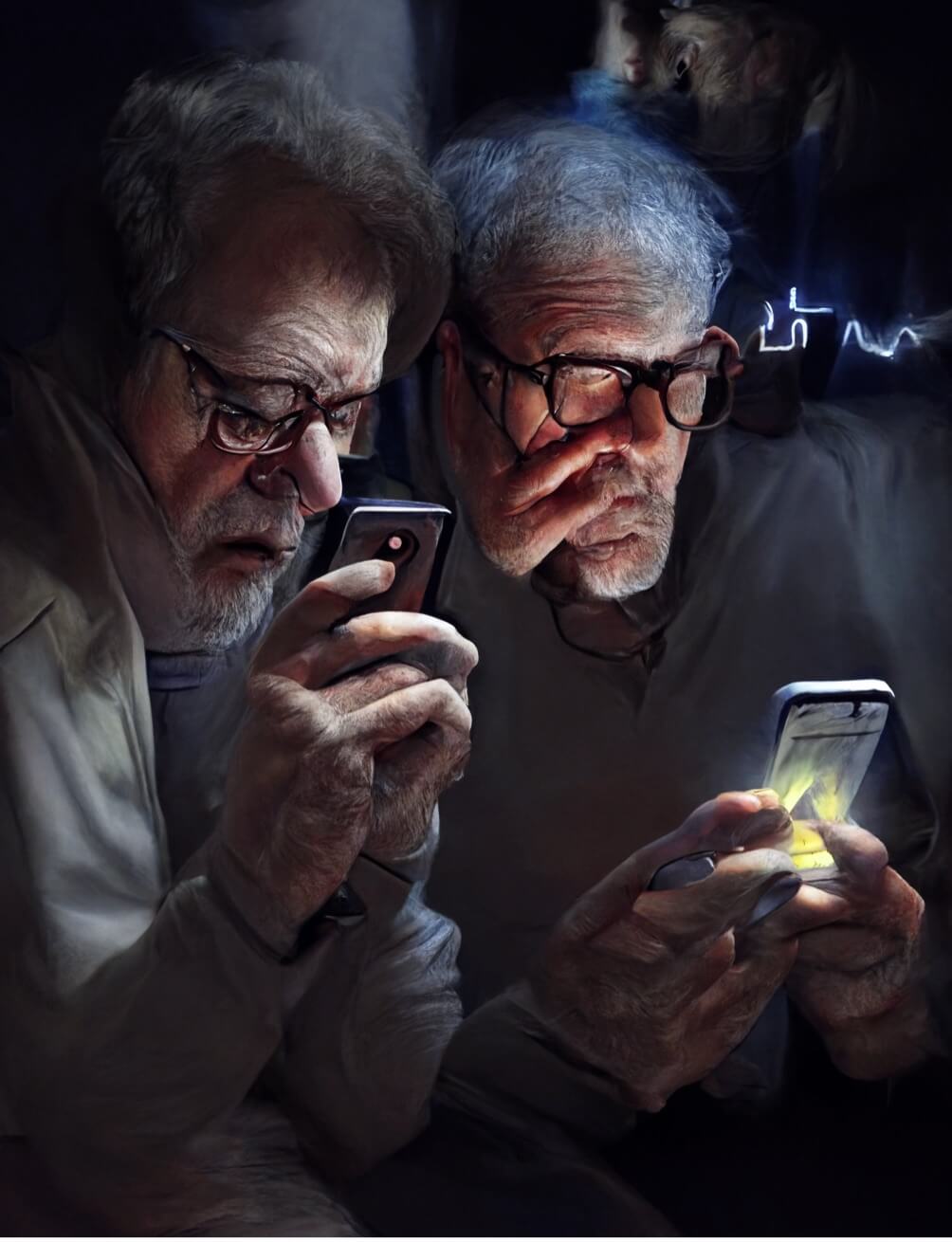
The other phenomenon feeding into my obsession with this theory is the eternal cycle of local celebrity reality-TV show announcements. The reality-TV boom at the beginning of this century has subsided from its lofty heights, but is still a cornerstone of local programming. While we’re no longer live-tweeting The X Factor en masse, reality competition shows — especially those centred on celebrities — still provide large audiences at a relatively low cost and so still get made season after season. To fill these seasons, producers have to find more and more celebrities to populate the beaches of Treasure Island, and with each announcement, we get more and more people scratching their heads wondering who these people are.
“Even I have to do a lot of research when those casts are announced sometimes — they’re not all known to me and I don’t know how much deeper I could be in New Zealand popular culture,” says Alex Casey, senior writer at The Spinoff, “lover of celebrity of any strata on the hierarchy” and probably our best and most prolific local reality-TV critic, recapper and power ranker. “But there’s always this very impassioned group of people on Facebook who take great pride in commenting ‘WHO CARES?’ in capital letters or ‘WHO ARE THESE PEOPLE?’ and they almost feel personally affronted by the fact they don’t know who they are and yet do not attempt to do any research. It’s almost like there’s an aggression towards the idea of celebrity in New Zealand. How dare anyone call themselves that!? How dare you put these people in front of me if it’s not Paul Holmes!?”
And yet, each of those cast members will be a genuine celebrity to someone; it’s just increasingly unlikely — almost impossible — that all of them will be celebrities to the same someone. Rather than despair about a lack of shared culture, Casey celebrates the increased diversity of these shows, not just in the identities of the cast (having more celebrities tends to mean more brown celebrities, more old celebrities, more queer celebrities, more everything celebrities), but in the pockets of culture they are there to represent. “If there’s someone I don’t know, it’s an opportunity to find out where they came from and what they represent and what some portion of New Zealand is finding interesting or moving enough to promote this person to celebrity status,” she says.
“I find it quite exciting the way those shows have expanded their catchment in terms of the cast. There’s often multiple social media influencers, people who come from the online world, people who aren’t More FM DJs or former pop stars. And I think it’s cool that these shows have pivoted to include those groups and consider them as celebrities. Even people like [dancer and choreographer] Lance Savali. He was not that well known to most people before Celebrity Treasure Island and, strangely, that show made him a star. He was already famous for some people who understood his work — and internationally, he’s renowned and has proximity to celebrity in terms of Rihanna and JLo — yet he was relatively unknown to middle New Zealand. Celebrity Treasure Island almost works as a launching pad now.”
By having more celebrities, even if individually they are less famous than the fewer celebrities we used to have, we’re celebrating more and more varied people for more and more varied reasons. “What makes a person a celebrity now is a massive range of talents, pursuits, industries,” Casey says. “Art and Matilda [Green] were the first big influencer celebrities in New Zealand. And that was just from being on reality TV, it wasn’t from writing ‘Slice of Heaven’ or being an All Black. It’s like the Kardashian thing — sure, they were on TV but they became more famous for being famous than for being on TV.”
Who we make famous and what we make people famous for is always a reflection of the society of the day. Casey sees our current celebrity culture as a logical historical development. “If you look throughout history, we had prominent figureheads as a way of modelling acceptable behaviour or an exceptional talent or representing the best of us. Perhaps celebrity doesn’t need to exist in the same way anymore because we can look at people much closer to home. We can find that modelling in pretty narrow social spheres online.
“What is the function of a celebrity? Is it to have a shared understanding of what we value and what we don’t value and who we think represents us well? There’s not a lot of common ground anymore. But maybe that’s a good thing, that people can seek out people that they think represent the best of them and it’s okay that we don’t share that… I genuinely don’t know the answer! That’s also how you get people like Andrew Tate — celebrities who have these very extreme views that go unpoliced by large parts of the population and can get a lot of dodgy stuff across to a large audience completely unchecked. But who has the right to check? Who decides who’s an okay celebrity?”
Perhaps that’s the central issue. When we had a shared, dominant mass culture, we had limited options, but we shared those limited options together. You watched TV One or TV2, you voted Labour or National. Shortland Street or Holmes. And that mass culture was, for the most part, the product of a relatively small number of (generally Pākehā) gatekeepers — the people who got to decide what was on the news that night, what songs they played on the radio, what shows made it to air and who was on them.
Now, what’s left of the dominant mass culture is hanging on by a thread. There are few things that we all agree on. The early weeks of Covid felt like a return to old times (except less monolithically monocultural) — people from diverse communities all around the country watching the 1pm briefing, and most people doing what the experts and the authorities asked them to. Ashley Bloomfield became a genuine celebrity, as famous as Angela Bloomfield in her heyday. Jacinda Ardern continued her trajectory of increased global adulation. But things quickly came crashing down. The early near-consensus on Covid splintered into groups of every persuasion — those who felt we let go of restrictions too early, those who wanted to reopen the economy at all costs, those who would soon be camping out on Parliament’s lawn, those who ‘did their own research’ on YouTube and are now getting their news from Counterspin Media instead of 1News (through 1News still dominates TV ratings).
And there’s the rub. When we all have our own devices, our own media, our own celebrities, we also have our own truths. The downside is that we have less in common across the broader culture (“WHO ARE THESE PEOPLE?”); the upside is we have more in common with the slice of people we choose to see on our screens, that we choose to let into our lives. The downside is the almost impossibility of consensus on issues that require it (climate change); the upside is a more-open, less-hierarchical culture with fewer gatekeepers. The downside is that anyone with a phone can find an audience and a populist following for batshit, retrograde ideas; the upside is that anyone with a phone can make content as entertaining and compelling and meaningful as the most powerful and well-resourced production company.
We can even be our own celebrities. With the exception of that echelon of the globally mega-famous, perhaps eventually no one will really be famous because we’ll all be famous. We won’t turn other people’s personalities, images and lives into entertainment, because we’ll all be doing it to our friends and to ourselves. “Because of social media, everyone just treats themselves as a celebrity,” Casey says. “People are constantly documenting, marketing and promoting themselves. Maybe we’re too busy to think about other celebrities.” This reminds me of something Michael Galvin had told me when I asked him what it was like being famous back when New Zealand had a small but active paparazzi. “That would never happen to me now,” he said. “But it did happen. People were papped. Now, all these things that we used to avoid — product placement or naff shots of you doing something stupid — people are paparazzi-ing themselves!”
Still, though, the human urge to admire others and to be curious about their lives is as strong as ever. If the downside of our current moment is that we don’t have as many celebrities who can help bond us to other people in our shared experience of the world, the upside is that anyone can be a celebrity for anyone else — an anchor in our world of division, extreme events and fluid truths. They don’t have to be an actor or a TV presenter or a sports hero or a pop star, they can be an Instagram cook, a TikTok dancer or a public servant. They might not be on televisions every night or on the cover of magazines, and your cousins might have no idea who they are — but they can still be a personification of your values, a modelling of how to live in the world.
* There’s a huge exception to this theory, which is a related but separate subject for discussion: the world’s most famous celebrities — by various metrics the top four are Elon Musk, Dwayne ‘The Rock’ Johnson, Ariana Grande, Cristiano Ronaldo — are, due to population growth, globalisation and advances in communications technology, more famous than any living people have ever been in the history of civilisation.
–

